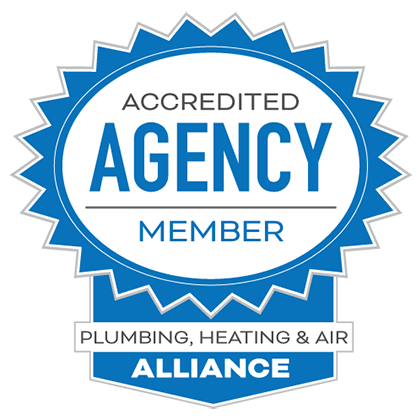One of the most challenging life lessons is learning when to let go. Unfortunately, dropping an unproductive website proves more than they can bear for many HVAC contractors, even if that site is harming their bottom line. Nolen and Jason discuss why starting from scratch is usually the best approach for getting your SEO and online marketing back on track in our latest podcast.
If your business has struggled to earn leads through your current website design, be sure to listen in closely.
Key Points to Listen For:
- Visuals do not drive website performance.
- Patchwork efforts from multiple vendors waste time and money.
- Quality website design utilizes coding, content, and visuals.
Ditching the Old Website Design
Imagine the prettiest, high-dollar air conditioning unit money can buy. Your customers call asking about the installation process and how soon they can buy their system. Orders pile in, and these exciting projects start filling up the calendar. Then, weeks into installing these brand new (and expensive) appliances, you receive startling news: they don’t work. The blower motors can’t summon enough power to drive air through the duct lines due to a previously unknown design flaw.
Ideally, this situation would never happen in real life. After all, contractors take time to make sure their inventory performs as designed. But what if you heard of a contractor that knew of the part flaw and continued selling the system without warning customers? You’d probably be pretty angry, and rightly so.
Digital marketers have been selling flawed website designs for years.
Various marketing agencies sell template websites that discourage high rankings on SERPs. We previously talked about the untold dangers of website template designs, which offer impressive visuals but lack the power of SEO. The type of templates that most heating and cooling professionals invest in (especially the bargain variety) doesn’t produce the traffic level businesses need for sustained growth.
Escaping from Stagnant Online Performance
As our team at the HVAC Webmasters has found over the years, the vast majority of online-active HVAC contractors have yet to grasp this truth. As a result, when shown concrete analytical data that their websites are underperforming, some companies cling all the more fiercely to their old website designs. As a result, they continue to earn a fraction of the leads they could achieve if they switched to a more optimized site.
What’s keeping these professionals from letting go?
Below, we will tackle some complex facts about website design and why templates don’t provide the results HVAC companies need. If any of these points hit home, it might be time to dig into your Google Analytics and see if your website is due for a change.
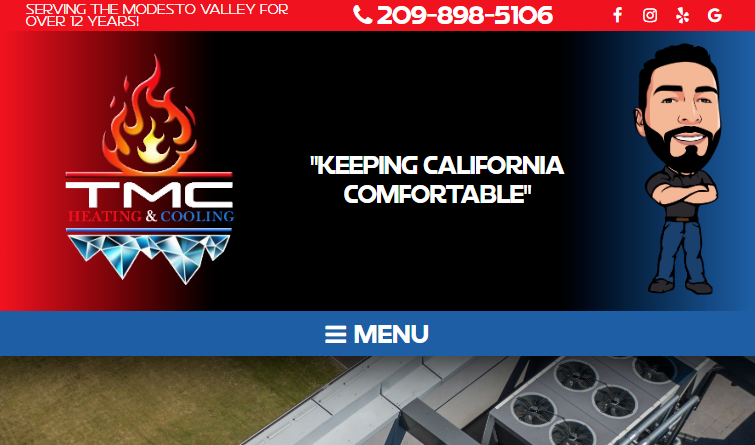
Fact #1: Your Visuals Don’t Drive Performance.
All the professional graphic design and eye-catching templates do almost nothing to drive your HVAC SEO performance. While they certainly add to the user experience (UX), visuals don’t draw people to your website. To put this in perspective, let’s consult the typical process of how someone finds your website.
Google Search Process (The Basics)
- Step #1: A user enters a phrase and begins a search.
- Step #2: Google examines keywords in the phrase.
- Step #3: The search engine recalls related pages from its vast index.
- Step #4: Google arranges entries by order of relevance in a SERP.
- Step #5: The user browses the list and chooses a listing.
- Step #6: The user arrives on your website.
The rest is history. Either the user likes what they see and investigates the site further, or they “bounce” and examine other sites. Your graphic design and other site visuals are essential during this phase, but most people don’t make it that far. No matter how gorgeous the design template a site may have, Google Search users will never even see it if the website fails to draw traffic in the first place.
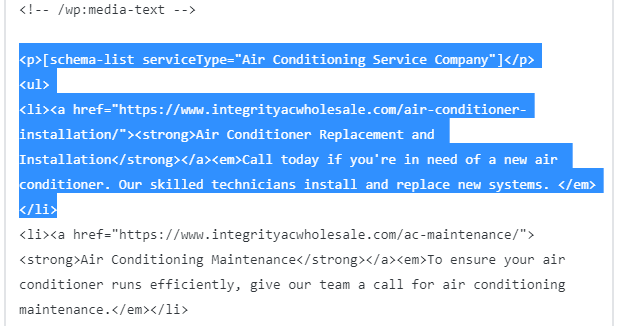
Fact #2: It’s All Tied Together.
“Okay,” you might think. “I’ll add in all the elements that I need to draw people to my site. How hard can that be?“
HVAC SEO (search engine optimization) involves many facets of website design. One crucial portion of the optimization process comes from keywords and their integration into the content throughout the site. That plays a massive role in how Google categorizes your services and ranks them for search.
Then there’s coding. Perhaps the most under-acknowledged driver behind local search performance, schema coding tells Google how to interpret the content inside your website. Unfortunately, most site templates come from graphic designers who attended art school but probably had minimal experience coding a website.
There are many other elements of site optimization, such as navigation, page structure, image attributes, and more. Unfortunately, these are tied directly to the template’s design and can’t easily be changed (effectively). The result is an attractive but underperforming site that doesn’t drive traffic.
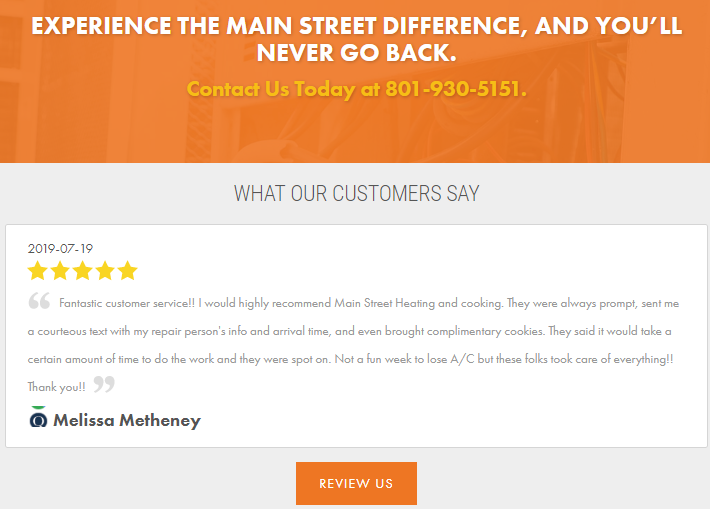
Fact #3: It’s (Usually) Cheaper to Start Fresh.
Let’s say you’ve purchased an attractive template that seems to represent your HVAC company well. We’ll even say that your design company input your logo and slightly altered the template theme so that coloring matches. That’s pretty typical for a cheaper service.
You paid a couple of thousand for the site, but it’s underperforming. What are the options?
- Option #1: Let the site stay as-is.
- Option #2: Patch in missing SEO elements.
- Option #3: Choose a website redesign.
Option #1: Let it Stay
If you’re not satisfied with the performance of your website as it is now, there’s very little chance of significant change happening on its own. Keep in mind that even the most highly optimized websites take a few months to get results when they first launch. However, older websites won’t spontaneously jump from page 10 to page 1. There has to be a dramatic change in the site’s optimization, which is hard to achieve with a template.
End Result: You have to rely on other forms of marketing to compensate, so you’re still spending extra money.
Option #2: Tack on Additional SEO Elements
Enhancing a given website template may take more time, money, and effort than you’d like. For one, site updates often require input from multiple specialized marketing vendors. One adds a reviews tool; another rewrites the content. Even if all these facets find their way into the site, you’ll need to ensure they work together (and not against each other).
End Result: Multiple site projects and vendors makes managing the site extremely frustrating. There may be performance improvements in local search, though.
Option #3: Ditch the Template
A fresh start sometimes offers the cheaper path of least resistance. Even if it takes thousands of dollars for a trusted company to design your new custom site, the resulting traffic influx will more than compensate. Plus, you won’t have to worry about spending additional funds for patches, redesigns, or getting multiple vendors to fix random bugs.
End Result: Your company earns lasting traffic improvements to your site, and you can start ranking up in local search. No significant update costs are needed.
What if Your Site Could Earn Thousands of Pageviews in a Few Months?
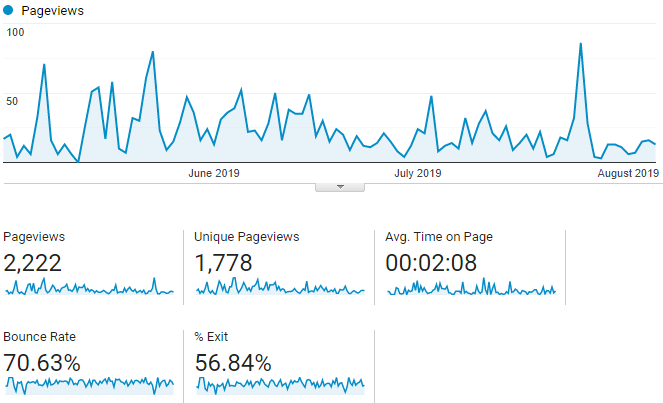
Team Up With HVAC Webmasters
You can probably tell which website design option we prefer at HVAC Webmasters. Our team produces custom-coded, highly optimized websites for companies all across the country. As a result, clients earn enormously better traffic volume, deeper customer interaction, and more substantial lead generation in their local service area. If your business has struggled with gaining ground in online search, we’d love to team up with you to change that.


